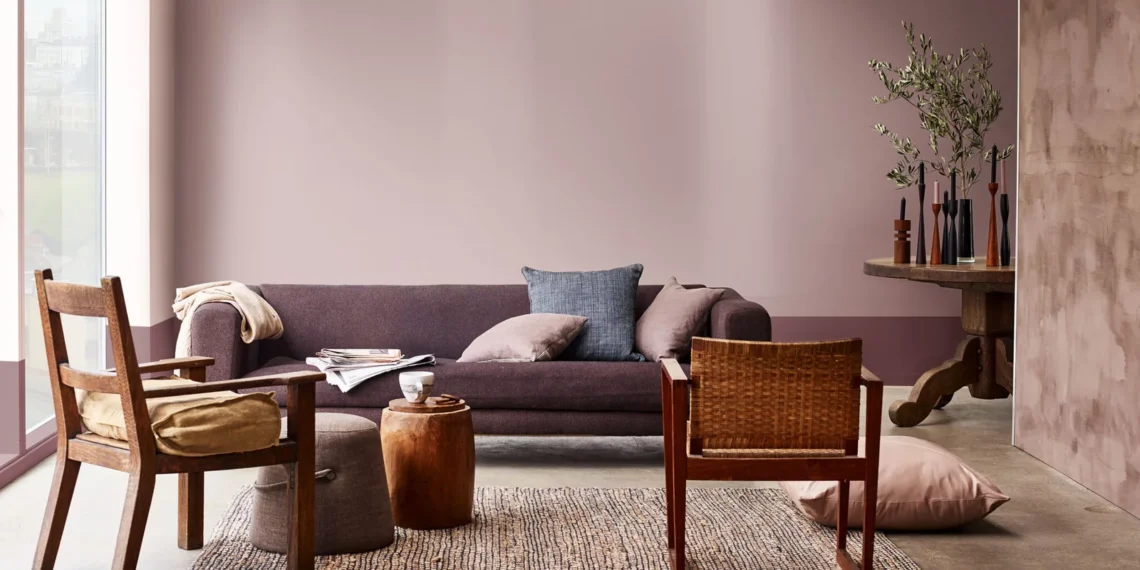Colour of your house can affect a lot of things in your life which is why choosing the right wall paint colour for your home is important. The colour of your walls sets the mood, reflects your style, and impacts the overall ambiance of your living space. With countless options available, it’s essential to make an informed decision that will make your home truly shine.
In this blog post, we will guide you through the process of selecting the perfect wall paint colour for your home, helping you create a space that is both visually pleasing and personalised to your taste.
Consider the Mood
The first step in choosing wall paint colours is to determine the mood you want to create in each room. Do you desire a cosy and intimate atmosphere in your bedroom, a vibrant and energetic vibe in your living room, or a serene and calming feel in your bathroom?
Different colours evoke different emotions, so it’s important to choose colours that align with the purpose of each space. Here are some examples:
- Warm colours like oranges, reds, and yellows promote energy, warmth, and excitement. They are great choices for spaces where you want to stimulate conversation and activity, such as the living room or dining area.
- Cool colours like greens, blues, and purples create a sense of calmness and tranquility. These shades work well in bedrooms and bathrooms where you seek relaxation and peace.
- Neutral colours like grays, whites, and beiges provide a versatile backdrop for any style and can create a timeless and sophisticated look. They work well in common areas like hallways or areas where you want to showcase artwork or furniture.
Consider Natural Lighting
Natural lighting plays a significant role in how wall colours appear in your home. When choosing a paint colour, consider the amount of natural light each room receives at different times of the day. Here are some tips to keep in mind:
- North-facing rooms generally receive cool, bluish light throughout the day. To counterbalance this, consider using warm colours to create a cheerful atmosphere.
- South-facing rooms receive a lot of direct sunlight, which can make colours appear brighter and more intense. Cooler colours can help balance the intense light and create a more comfortable environment.
- East-facing rooms have a warm, yellowish light in the morning and cooler light throughout the day. Consider how the colours will look in both types of lighting when selecting the paint.
- West-facing rooms have warm light in the afternoon and evening. Consider using warm colours to enhance the snug feel during these times.

Harmonise with Existing Elements
When choosing a wall paint colour, it’s important to consider your existing furniture, flooring, and other elements in the room. Harmonising the colours will create a cohesive and well-designed space. Here are some suggestions:
- If you have colourful furniture or artwork that you want to stand out, opt for neutral wall colours to create a balanced backdrop.
- For rooms with wood floors, consider warm colours like browns, tans, or creams to complement the natural tones of the wood.
- If you prefer a monochromatic look, choose varying shades of the same colour to create depth and interest.
Also Read 32 Stunning Single Story White House Black Trim Ideas To Adore.
Test Before Committing
Before painting the entire room, it’s crucial to test the paint colours in different lighting conditions. Purchase small sample cans of your top colour choices and apply them to a small area on the wall.
Observe how the colours look during different times of the day and under various lighting conditions. This will give you a better idea of how the colour will appear on a larger scale.
Seek Professional Advice
If you’re still unsure about choosing the right wall paint colour or want expert guidance, consider consulting with professional home painting services. They have extensive knowledge and experience in selecting colours that suit your home’s style, architecture, and personal preferences.
They can also provide valuable insights into current trends and help you create a cohesive colour scheme throughout your home.
Conclusion
Selecting the perfect wall paint colour for your home is a process that requires careful consideration of various factors. By understanding the mood you want to create, considering natural lighting, harmonising with existing elements, testing colours, and seeking professional advice when needed, you can make an informed decision that will transform your home into a beautiful and personalised space. Remember, the perfect paint colour is the one that brings you joy and reflects your unique style. Happy painting!









